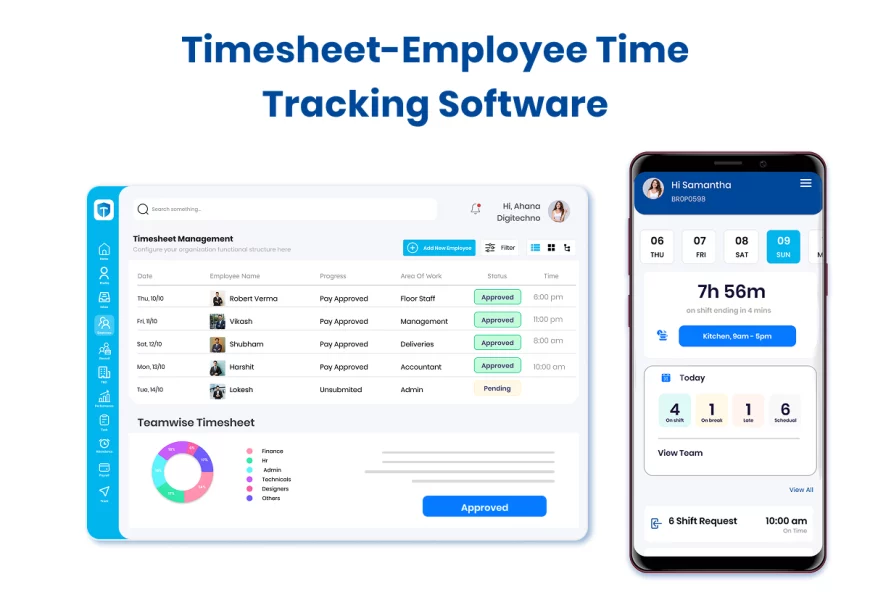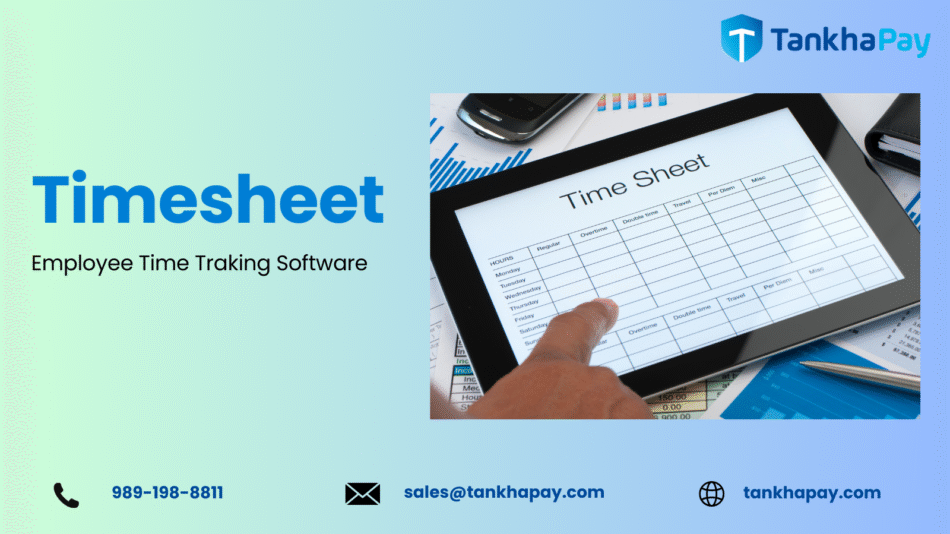Introduction – Why Timesheet Software Matters in 2025
In today’s fast-paced work environment, businesses are constantly looking for ways to manage time, track productivity, and ensure payroll accuracy. That’s where timesheets come into play. A timesheet is more than just a record of hours; it is the foundation of effective payroll, compliance, and performance tracking.
With evolving workplace models—remote, hybrid, and gig-based—traditional manual timesheets have become outdated. Companies now rely on Timesheet Software to streamline time tracking, ensure accurate payroll, and stay compliant with labor regulations. In 2025, adopting smart timesheet systems isn’t just an option—it’s a business necessity.
What is Timesheet Software?
To understand timesheet software, we must first answer: What is a Timesheet?
A timesheet is a tool employees use to record the number of hours they spend working, whether daily, weekly, or monthly. Traditionally, timesheets were managed manually on paper or spreadsheets.
Timesheet Software is the digital version of this process. It allows businesses to record, monitor, and manage employee work hours automatically. Instead of employees manually logging hours, the software captures log-in/log-out times, project hours, breaks, and overtime seamlessly.
In simple terms, Timesheet Software = Smart Time Tracking + Payroll Integration + Compliance Support.

Key Features of Timesheet Software
Modern timesheet management software comes packed with features designed to simplify time tracking and boost efficiency. Some key features include:
- Automated Time Tracking – Employees can clock in/out digitally, reducing manual errors.
- Project & Task Tracking – Assign hours to specific projects and monitor productivity.
- Overtime & Leave Management – Record extra work hours and calculate leave deductions easily.
- Integration with Payroll Systems – Sync timesheets with payroll to ensure accurate salary calculations.
- Real-Time Dashboards & Reports – Instant insights into work hours, productivity, and team performance.
- Mobile Accessibility – Employees can log hours using smartphones or tablets, perfect for remote teams.
- Compliance Tools – Helps businesses adhere to labor laws, overtime rules, and record-keeping requirements.
Timesheet Software and Employee Productivity
Productivity is a major concern for businesses. Without visibility into how employees spend their work hours, it’s challenging to measure efficiency.
Timesheet Software solves this problem by:
- Tracking actual hours spent on each task.
- Highlighting unproductive patterns (e.g., late log-ins, extended breaks).
- Encouraging transparency and accountability.
- Helping managers allocate workloads fairly.
Example: If a marketing team spends 60% of its time on admin tasks instead of campaigns, managers can quickly reassign responsibilities to boost output.
In this way, timesheet software becomes not just a tracking tool, but a productivity booster.
Payroll Accuracy with Timesheet Software
Payroll errors are among the most common reasons for employee dissatisfaction. Manual entry often leads to miscalculations, underpayment, or delayed salaries.
By integrating with payroll systems, Timesheet Software ensures:
- Exact calculation of working hours.
- Proper inclusion of overtime and leave.
- Error-free salary processing.
- Timely payment cycles.
For small businesses and enterprises alike, accurate payroll builds trust and reduces disputes. With timesheet automation, payroll teams save countless hours that would otherwise be spent fixing errors.
Ensuring Compliance through Timesheet Software
In 2025, labor law compliance is more important than ever. Businesses must maintain accurate employee records, track overtime, and follow leave policies.
Timesheet Software helps businesses stay compliant by:
- Maintaining audit-ready digital records.
- Ensuring accurate overtime calculations.
- Supporting government reporting requirements.
- Protecting against legal disputes related to wages or work hours.
This makes timesheet systems essential not only for HR but also for legal and compliance teams.
Timesheet Software vs. Traditional Methods
| Aspect | Manual Timesheet | Timesheet Software |
| Accuracy | Prone to errors | Highly accurate |
| Time Required | Time-consuming | Automated & fast |
| Payroll Integration | No | Seamless integration |
| Compliance | Difficult to track | Built-in compliance |
| Transparency | Limited | High, real-time reports |
Clearly, manual methods are outdated in a digital-first world. Timesheet Software not only reduces workload but also ensures long-term scalability.
Best Timesheet Software Tools in 2025 (List + Reviews)
Here are some of the top timesheet software tools in 2025:
- TankhaPay – Perfect for SMEs and startups. Offers payroll, compliance, and time tracking in one platform.
- Pros: Affordable, easy to use, compliance-focused.
- Best For: Small and medium businesses.
- Toggl Track – A favorite for freelancers and remote teams.
- Pros: Simple UI, project-based tracking.
- Best For: Individuals and small teams.
- Clockify – Free time tracking tool with premium upgrades.
- Pros: Free plan, detailed reports.
- Best For: Businesses on a budget.
- Hubstaff – Advanced monitoring with GPS and productivity analytics.
- Pros: Mobile-friendly, remote team support.
- Best For: Distributed teams and field staff.
- Harvest – Great for agencies and project-based firms.
- Pros: Project expense tracking + invoicing.
- Best For: Service-based businesses.
How to Choose the Right Timesheet Software for Your Business
Selecting the right tool depends on:
- Business Size – SMEs may need simple, affordable tools, while enterprises need advanced integrations.
- Budget – Free vs. paid software (consider long-term ROI).
- Key Features Needed – Project tracking, payroll integration, mobile access, compliance.
- Ease of Use – Software should be user-friendly to ensure employee adoption.
- Integration – Must integrate with existing payroll, HRMS, or accounting tools.
Tip: Always test the free trial/demo before finalizing a tool.
Future Trends in Timesheet Software
In 2025, timesheet management is evolving rapidly. Some key trends include:
- AI & Machine Learning – Predict work patterns and automate entries.
- Mobile-First Approach – Timesheet apps designed for smartphones.
- Biometric Attendance Integration – Fingerprint/face recognition to prevent proxy entries.
- Cloud-Based Systems – Access from anywhere, anytime.
- Data Analytics & Insights – Advanced dashboards for productivity forecasting.
These trends make timesheet software smarter, faster, and more reliable than ever.
Conclusion – Why Smart Timesheet Software is Essential
To sum up, Timesheet Software is no longer just a time-tracking tool—it’s a complete solution for improving productivity, ensuring payroll accuracy, and maintaining compliance.
From startups to global enterprises, adopting smart timesheet systems ensures better resource management, happier employees, and long-term business growth.👉 If you’ve ever wondered “What is a Timesheet and how does it help businesses?”, the answer is clear: Timesheet Software is the modern backbone of workforce management.




